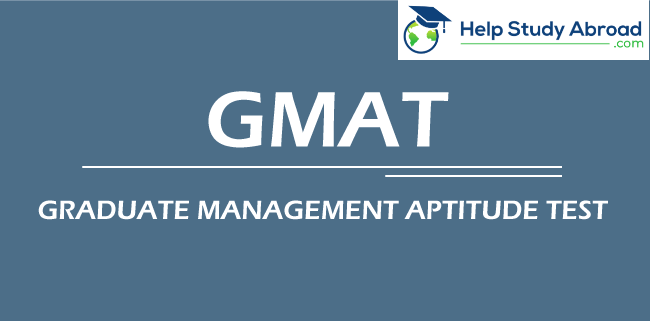GMAT Syllabus 2025
The Graduate Management Admission Test (GMAT) is a critical step for anyone aspiring to join a top business school. With the 2024 GMAT syllabus updates, understanding what to expect is essential for effective preparation. These updates make the GMAT a more streamlined and modern exam, ensuring it remains a reliable benchmark for business school admissions. This guide delves into everything you need to know about the GMAT syllabus in 2025, covering its structure, sections, and tips to ace the exam.
Key Highlights
- AWA Removed: The Analytical Writing Assessment section is no longer part of the exam.
- Shorter Duration: Total time is reduced to 2 hours 15 minutes.
- Custom Review: Ability to revisit flagged questions within each section.
- Single Scoring Range: The score now ranges from 205-805.
Detailed Structure of GMAT
| Section | Purpose | Number of Questions | Time (Minutes) | Key Topics |
|---|---|---|---|---|
| Quantitative Reasoning | Tests mathematical and analytical problem-solving skills. | 21 | 45 | – Arithmetic: Fractions, Ratios, Speed & Time, Work & Time, Number Properties – Algebra: Equations, Inequalities, Functions, Exponents – Geometry: Triangles, Circles, Polygons, Coordinate Geometry – Data Interpretation: Charts, Probability, Venn Diagrams |
| Verbal Reasoning | Assesses comprehension, critical reasoning, and grammar. | 23 | 45 | – Reading Comprehension: Main Ideas, Inferences, Application of Information – Critical Reasoning: Strengthening/Weakening Arguments, Assumptions, Drawing Conclusions – Sentence Correction: Grammar, Parallelism, Idioms, Modifier Placement |
| Data Insights | Analyzes data from graphs, tables, and charts and tests logical reasoning. | 20 | 45 | – Data Interpretation: Tables, Graphs, Charts – Statistics: Mean, Median, Probability, Standard Deviation – Logical Reasoning: Deductive & Inductive Reasoning, Pattern Recognition – Integrated Reasoning: Two-Part Analysis, Multi-Source Reasoning, Table Analysis |
| Total | Integrates reasoning, comprehension, and data analysis for MBA readiness. | 64 | 135 |
Comparison between the GMAT Focus Edition and the Classic GMAT
| Feature | GMAT Focus Edition | Classic GMAT |
|---|---|---|
| Sections | Quantitative Reasoning, Verbal Reasoning, Data Insights | Analytical Writing Assessment (AWA), Integrated Reasoning (IR), Quantitative Reasoning, Verbal Reasoning |
| Number of Sections | 3 | 4 |
| AWA Section | Not included | Included (1 essay – Analysis of an Argument) |
| Integrated Reasoning (IR) | Integrated into the Data Insights section | Separate section |
| Total Questions | 64 | 80 + 1 essay |
| Total Duration | 2 hours 15 minutes (135 minutes) | 3 hours 7 minutes (187 minutes) |
| Quantitative Questions | 21 | 31 |
| Verbal Questions | 23 | 36 |
| Integrated Reasoning/Data Questions | 20 (as part of Data Insights) | 12 (separate IR section) |
| Score Range | 205-805 (total score only) | 200-800 (total score) + separate AWA and IR scores |
| Custom Question Review | Yes (can review flagged questions within sections) | Not allowed |
| Flexibility in Section Order | Yes | Yes |
| Primary Focus | Streamlined for MBA admissions with emphasis on reasoning and decision-making | Comprehensive assessment across all skills |
Key Differences:
- AWA and IR Changes: The Focus Edition eliminates the AWA and merges Integrated Reasoning into the Data Insights section.
- Time Efficiency: The Focus Edition is shorter by nearly an hour, making it less time-intensive.
- Scoring Simplified: Focus Edition combines all sections into a single score (205-805)
- Review Feature: The Focus Edition allows test-takers to revisit flagged questions within sections, offering flexibility not available in the classic version.

GMAT Focus edition syllabus section-wise weightage
| Section | Weightage (%) | Number of Questions | Time (Minutes) | Key Topics |
|---|---|---|---|---|
| Quantitative Reasoning (Quant) | ~33% | 21 questions | 45 | Arithmetic, Algebra, Geometry, Data Interpretation |
| Verbal Reasoning (Verbal) | ~33% | 23 questions | 45 | Reading Comprehension, Critical Reasoning, Sentence Correction |
| Data Insights | ~33% | 20 questions | 45 | Integrated Reasoning, Data Analysis, Table/Graph Interpretation |
| Total | 100% | 64 questions | 135 minutes |
Key Updates in the GMAT Focus Edition:
Streamlined Time and Content: A total of 135 minutes with 64 questions compared to the longer time of the classic GMAT.
What’s New in the GMAT Syllabus 2025?
The GMAT exam undergoes periodic updates to stay aligned with the evolving needs of business schools and the global business environment. Here are the key updates you should know:
Introduction of the GMAT Focus Edition
One of the most significant changes since 2024 is the rollout of the GMAT Focus Edition, an updated version of the test aimed at simplifying the structure while increasing its relevance.
Key changes in the GMAT Focus Edition include:
- Reduced Duration: The test is now shorter, taking about 2 hours and 15 minutes compared to the traditional 3 hours and 7 minutes.
- Eliminated Essay Section: The Analytical Writing Assessment (AWA) has been removed in the GMAT Focus Edition, making way for more practical sections.
- Enhanced Relevance: The test emphasizes Integrated Reasoning, Quantitative Reasoning, and Verbal Reasoning, which are seen as more directly applicable to business programs.
Consolidated Question Formats
From 2024, GMAT simplifies question types to streamline preparation and testing. For example:
- Integrated Reasoning: This section has gained more prominence, with a greater focus on multi-source reasoning and graphical data interpretation.
- Quantitative and Verbal Sections: Redesigned to focus on fewer but more impactful question types, improving clarity and relevance.
Enhanced Focus on Logical and Data Interpretation Skills
The evolving business world demands professionals who excel at interpreting data and making data-driven decisions.
- Integrated Reasoning Skills: The section includes more sophisticated data sets and real-world scenarios. Expect to encounter problems that combine text, tables, and graphs requiring comprehensive analysis.
- Critical Thinking in Quantitative Reasoning: The focus has shifted slightly from pure calculations to the logical evaluation of numerical data.
- Data-Driven Decision Making: Across sections, the GMAT now emphasizes the ability to use quantitative and qualitative data for informed decision-making.

Revamped Scoring System
- A Single Total Score: Ranging from 205 to 805, based on your performance in the three sections (Quantitative, Verbal, and Integrated Reasoning).
- Sub-Scores: For each section, providing detailed insights into your strengths.
Customized Test-Taking Order
The GMAT Focus Edition allows candidates to select the order in which they want to attempt the sections. This feature enables test-takers to start with their strongest section, boosting confidence and improving overall performance.
Enhanced Review and Edit Options
- You can mark up to three questions per section to revisit and change your answers during the allotted time.
- This feature helps reduce the pressure of making immediate decisions, especially in complex problem-solving scenarios.
Digital Whiteboard Option
The GMAT Focus Edition includes an online whiteboard feature that ensures parity between test center and at-home exams, allowing candidates to:
- Write notes.
- Solve calculations.
- Sketch diagrams or flowcharts as needed.
More Flexible Preparation Resources
With these updates, GMAC has also introduced revised study materials tailored to the Focus Edition. These include:
- Updated practice tests that reflect the new question types and scoring system.
- Revised official guides with streamlined content and more emphasis on Integrated Reasoning.
- Interactive online resources to help candidates adapt to the new test format.
Increased Focus on Application Relevance
- Integrated Reasoning’s prominence reflects the growing importance of big data and analytics in business decision-making.
- Simplified scoring and testing formats make it easier for business schools to compare applicants and identify those with real-world problem-solving abilities.
Reduced Preparation Burden
- With fewer sections and question types, candidates can concentrate on mastering high-priority skills.
- Shorter test duration reduces fatigue, allowing test-takers to maintain focus and perform at their best.
Understanding the 2025 syllabus and its nuances is the first step toward effective preparation for GMAT. By focusing on each section, practicing regularly, and staying updated on any changes, you can boost your confidence and maximize your chances of success. Remember, the GMAT is as much about strategy as it is about knowledge. Prepare well, stay consistent, and tackle the exam with a clear mind.
FAQs
- Does the Verbal section require advanced English skills?
- The Verbal section tests grammar, reading comprehension, and critical reasoning, focusing on logic and clarity, not advanced vocabulary.
- The Verbal section tests grammar, reading comprehension, and critical reasoning, focusing on logic and clarity, not advanced vocabulary.
- What is the difficulty level of the GMAT Quantitative section?
- The Quantitative section tests high school-level math concepts but requires logical reasoning and time management to solve problems efficiently.
- The Quantitative section tests high school-level math concepts but requires logical reasoning and time management to solve problems efficiently.
- Are calculators allowed in the Quantitative section?
- No, calculators are not allowed in the Quantitative section. However, one is provided for the Integrated Reasoning section.
- No, calculators are not allowed in the Quantitative section. However, one is provided for the Integrated Reasoning section.
- Does the GMAT syllabus change every year?
- The GMAT syllabus remains largely consistent over time, but occasional updates or changes may be introduced to the question format or scoring.
- The GMAT syllabus remains largely consistent over time, but occasional updates or changes may be introduced to the question format or scoring.
- Is the GMAT syllabus the same for all test-takers?
- Yes, the syllabus and format are standardized globally for all GMAT test-takers.




